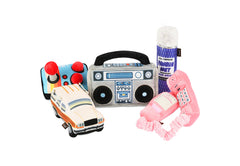For many pet owners, having a nice outdoor space or a large backyard is a necessity when picking out a home. Some people even take it a step further, striving to create the perfect play area for their pets.
From utilizing pet-friendly materials to adding fun experiences for your pet, pet owners are making the best of their outdoor space through the act of petscaping.
Understanding petscaping
Petscaping is the practice of turning your outdoor space into a place that your pet can safely enjoy. By incorporating petscaping practices into the design and maintenance of your outdoor space, you will be able to turn your backyard into your pet’s dream!
4 helpful tips for creating a fun and safe outdoor space for your pet
Ready to turn your backyard into a pet paradise? Check out these helpful tips below to begin your petscaping journey!
1. Keep your pet’s personality in mind
As you consider all of the different ways to layout your outdoor space, consider your pet and their unique habits. Whether you have a dog that loves to run around or a cat that spends its time lounging in the sun, there are creative ways to maximize the potential of your outdoor space to keep your animals happy and healthy!
Some fun outdoor additions include:
- An obstacle course
- A small swimming pool or splash pad
- A sandbox
- A pet-friendly garden
- A multi-level cat tree
- A large pet house for relaxing
By including these fun additions, you are sure to have an outdoor space your pet will love!
2. Remove any potential dangers
When letting your pet roam around outside, it is important to remove any hazards. If you have any chemicals outside such as weed killer or lawn fertilizer, be sure to store them in a place out of your pet’s reach.
Another important item to consider is the plants that you have in your outdoor space. Even common plants and flowers can be harmful to your pet. Some plants to avoid include:
- Aloe vera
- Daffodil
- Foxglove
- Lillies
- Milkweed
- Tulips
For a complete list of toxic plants to keep away from your pet, check out this guide from ASPCA.
3. Take care of pests
To maximize your and your pet’s outdoor enjoyment, it is important that you make use of safe pest control methods. This can include:
- Treating your lawn for fire ants
- Spraying for mosquitos
- Using yellow jacket traps
When considering pest control methods, be sure to inform your pest control expert that you have pets. That way you can be sure that the safest chemicals are used and that you follow the proper instructions to ensure your pet's safety.
4. Use pet-friendly materials
As you work on customizing your outdoor space, be sure to choose durable pet-friendly materials. By doing so, you can create a fun space that can withstand the wear and tear that your pet might bring on.
One popular option is the use of fake grass. By using fake grass, you can protect your lawn from holes, dead spots, and mud. Other pet-friendly materials include:
- Bermuda grass
- Bricks
- Concrete
- Paver stones
Choosing these materials can ensure that your newly petscaped outdoor space will last for years to come.
Protecting your hard work
Now that you are ready to enjoy your new outdoor space, it is important to ensure it is protected. Just like when adding additional structures to your property, some petscaping additions may be covered by your home insurance.
By keeping your home insurance provider up to date with any new changes, you can be sure that your hard work is protected. That way, if anything becomes damaged, you can get the help you need. With your new outdoor space covered, you and your pet can enjoy it worry-free for years to come.
Need more ideas?
Looking for more petscaping motivation? Check out this helpful infographic for more ways to create the perfect outdoor space for you and your four-legged friend!





